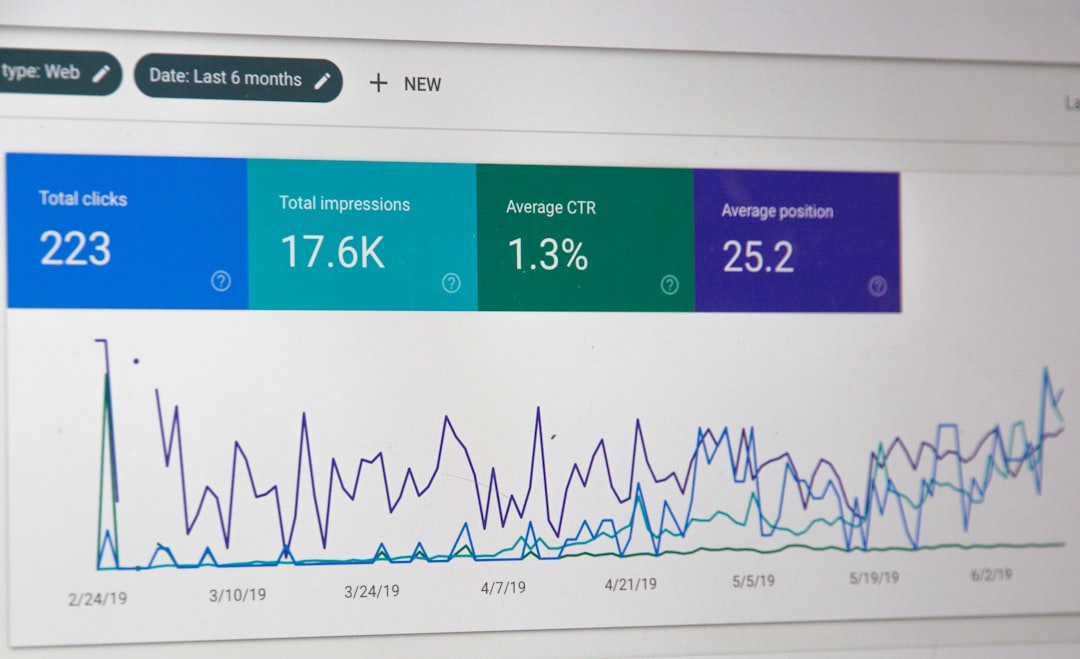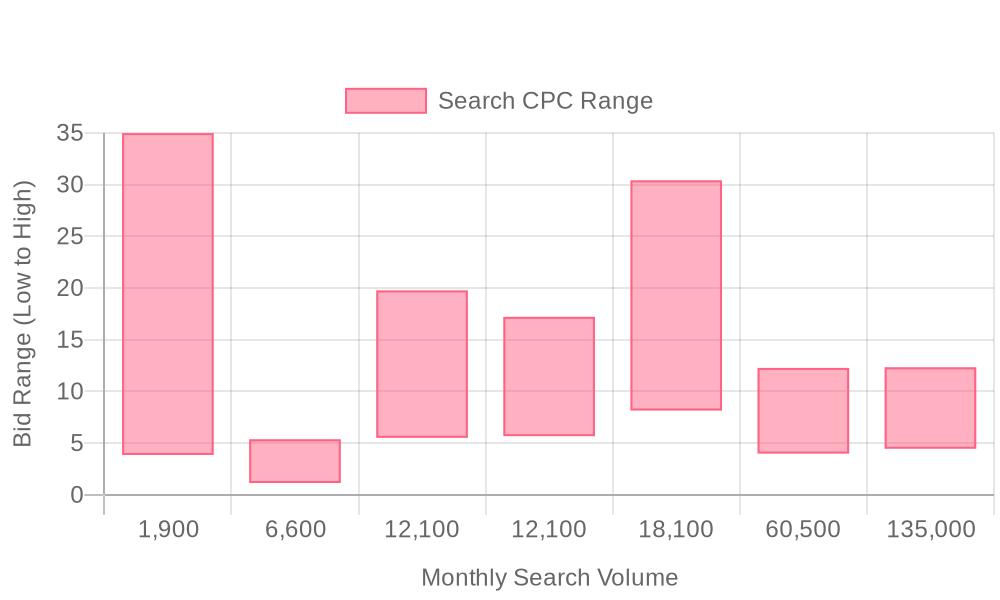
Supercharge your lead generation with a FREE Google Ads audit - no strings attached! See how you can generate more and higher quality leads
Get My Free Google Ads AuditFree consultation

No commitment
Supercharge your lead generation with a FREE LinkedIn Ads audit - no strings attached! See how you can generate more and higher quality leads
Get My Free Google Ads AuditFree consultation

No commitment
Supercharge your lead generation with a FREE Meta Ads audit - no strings attached! See how you can generate more and higher quality leads
Get My Free Google Ads AuditGet My Free LinkedIn Ads AuditGet My Free Meta Ads AuditFree consultation

No commitment
Supercharge your lead generation with a FREE Google Ads audit - no strings attached! See how you can generate more and higher quality leads
Get My Free Google Ads AuditFree consultation

No commitment
In today’s dynamic marketing landscape, Internet Marketing Services businesses face the challenge of bridging digital and traditional channels to effectively generate leads. Missing high‑value prospects because they aren’t tracked in the CRM is a critical issue, leading to lost opportunities. It’s essential to intercept decision-makers during critical searches and measure ROI comprehensively—from the first click to final conversion. Google Ads emerges as a vital tool to capture high-intent prospects, offering opportunities to address these industry challenges and enhance marketing efforts across multiple fronts.

Modern B2B marketing teams rely on precise, real-time data to capture and convert high-value leads before they slip through the funnel. Google Ads empowers these teams to surface demand from decision-makers actively searching for digital marketing and agency solutions, making every ad dollar accountable and measurable. For a foundational understanding of campaign setup and ad placement, review this overview of how Google Ads functions.
A strategic, data-driven Google Ads approach allows marketers to align their paid campaigns with specific business growth goals. By leveraging visitor identification and intent signals, teams can prioritize accounts that are in-market, adjust spend dynamically, and build audiences that evolve as prospects engage across channels.
Internet marketing services operate in a landscape where competition for high-value clients is relentless and decision cycles are short. With Google Ads, these organizations can engage decision-makers who are actively researching digital solutions, not just casting a wide net but reaching the stakeholders most likely to convert. Marketers can move beyond surface-level analytics to identify anonymous visitors in real time, transforming unknown website traffic into actionable sales opportunities and enabling outreach to accounts that might otherwise remain hidden.
New business acquisition is a core growth driver for internet marketing services, and Google Ads provides a direct channel to prospects outside of existing pipelines. Intention-driven campaigns allow for precise messaging at the exact moment a potential client expresses need, significantly increasing the quality of inbound leads. By mapping intent signals and dynamically updating audience lists, marketers ensure that every dollar is spent on the highest-potential prospects, adapting in real time as new opportunities emerge. For a deeper understanding of how Google Ads functions and supports targeted campaigns, review this overview of Google Ads.
Timeliness is crucial when responding to urgent business demands. Google Ads enables rapid deployment of campaigns tailored to immediate needs and market shifts, ensuring that marketing and sales efforts align with real-time visitor activity. By harnessing live behavioral data, teams can quickly reallocate budget to the most promising accounts, reducing lag between lead identification and follow-up.
The reach of Google Ads is not limited by geography, allowing internet marketing services to expand into emerging regions and test new markets with precise placement controls. Analytics-driven targeting ensures that expansion efforts are measured and refined continuously, focusing spend on areas where engagement and conversion rates trend upward. This adaptability supports rapid scaling without sacrificing efficiency or ROI.
Data integration is essential for demonstrating true marketing impact. Google Ads now supports offline conversion tracking, bridging the gap between digital engagement and sales outcomes that occur beyond the website or landing page. Marketers gain a holistic view of performance, from first click to closed deal, enabling smarter budget allocation and more accurate ROI measurement. Integrating CRM and enriched lead data into Google Ads further streamlines the audience sync process, ensuring that every campaign leverages the most current intelligence for targeting and retargeting efforts. If you’re ready to elevate your campaigns, get started for free with Sona.


Growth in internet marketing services is driven by precise audience targeting and data-backed decisions. Top-performing teams consistently review campaign analytics, shifting budgets and creative resources to areas showing the highest intent and conversion potential. Marketers who tap into real-time audience data quickly identify where demand is accelerating and adjust their strategies accordingly.
Ready to unlock more growth in your marketing? Get started for free with Sona.

Effective audience segmentation transforms digital marketing with Google Ads by enabling targeted engagement, better resource allocation, and higher conversion rates. B2B revenue teams that segment their audiences with precision deliver tailored experiences and see measurable increases in campaign efficiency and Google Ads ROI.
The foundation of successful Google Ads for Internet Marketing Services is precise audience segmentation. Start by organizing prospects into actionable groups based on firmographics, job function, buying cycle, and digital behavior. Segments such as "decision-makers at SaaS companies," "in-market marketing managers," or "past webinar attendees" enable marketers to customize messaging and align ad copy with audience pain points. This level of granularity not only boosts relevancy but also drives higher engagement and qualified lead generation. By leveraging advanced visitor identification and firmographic insights, marketers can move beyond anonymous clicks to target real businesses and individuals who match their ideal customer profile.
Identifying and acting on real-time intent signals is vital for Google Ads targeting. Overlaying website intent data enables teams to prioritize accounts actively researching internet marketing solutions, shifting advertising budgets toward high-converting prospects. For a step-by-step overview of how Google Ads works, refer to this overview of how Google Ads functions. Using platforms that enrich Google Ads audiences with dynamic intent data ensures campaigns adapt as prospects show new levels of interest, resulting in more efficient spend and improved conversion rates.
Once segments and intent signals are defined, ad group customization becomes the next lever for Google Ads optimization. Tailor creative assets—headlines, descriptions, and visuals—to address the unique motivations and pain points of each audience. For example, CMO-level prospects might respond to messaging around ROI and integration, while technical leads favor content on analytics and platform security. By dynamically updating real-time audiences as leads move through the funnel, marketers ensure that each touchpoint stays relevant, increasing the likelihood of engagement and accelerating the buyer journey.
Robust conversion validation is essential for measuring the true impact of segmented campaigns. Integrate advanced tracking solutions that capture both online and offline conversions, attributing revenue to the correct audience segments. Syncing enriched lead data directly into CRM and marketing automation platforms with automated destinations streamlines the follow-up process for sales teams, ensuring no high-intent lead goes unnoticed. This alignment allows for granular reporting, revealing which segments produce the best pipeline velocity and marketing-sourced revenue, giving marketers actionable feedback for ongoing Google Ads campaign setup and performance optimization. To see these capabilities in action, get started for free with Sona.

| Industry | Keyword | Monthly Search Volume | Competition Level | Low Bid | High Bid |
| Internet Marketing Services | google digital marketing | 1900 | LOW | 3.86 | 34.97 |
| Internet Marketing Services | freelance digital marketing | 6600 | LOW | 1.15 | 5.37 |
| Internet Marketing Services | online marketing | 12100 | LOW | 5.52 | 19.76 |
| Internet Marketing Services | digital marketing company | 12100 | LOW | 5.68 | 17.21 |
| Internet Marketing Services | internet marketing services | 18100 | LOW | 8.16 | 30.4 |
| Internet Marketing Services | digital marketing agency | 60500 | LOW | 4 | 12.27 |
| Internet Marketing Services | digital marketing | 135000 | MEDIUM | 4.47 | 12.33 |
Internet marketing services operate in a highly competitive digital landscape, making keyword strategy foundational to campaign success. Precision targeting ensures advertising investments reach users at decisive moments, maximizing every opportunity to connect with prospects actively seeking solutions. Sophisticated marketers prioritize keyword lists tailored to specific service offerings, buyer intent stages, and local nuances, driving measurable ROI and reducing wasted spend. For more guidance on optimizing your campaigns, explore this expert-recommended Google Ads best practices resource or browse our marketing blog hub.
Comprehensive keyword insight empowers teams to segment and categorize accounts by service type, buyer maturity, and geography. This enables highly targeted campaigns that adapt automatically as audiences move through the funnel, ensuring each message resonates with the right segment at the right time and maximizing the impact of digital marketing with Sona. Ready to optimize your campaigns? Get started for free with Sona.
Effective Google Ads for Internet Marketing Services begins with intelligent keyword selection. Service-specific modifiers, such as “SEO consulting” or “PPC management,” paired with locality cues like “in Chicago” or “near me,” cultivate highly relevant search intent and minimize wasted spend. By leveraging long-tail variations and query-based keywords, marketers reach niche prospects who demonstrate commercial readiness, improving both lead quality and conversion rates. For a structured approach to building your strategy, explore this step-by-step guide to launching a Google Ads agency.
Negative keywords play a pivotal role in refining ad targeting. Excluding irrelevant terms filters out unqualified traffic, ensuring budgets are allocated to audiences with true buying potential. When platforms enable deeper visitor identification, marketers can map high-value queries to actual companies, informing bid adjustments and prioritizing accounts most likely to convert. This relational data allows for dynamic audience creation, so keyword strategies adapt as leads move through the funnel.
Ad copy for Google Ads in internet marketing must resonate with decision-makers’ urgent needs and industry benchmarks. Highlighting common pain points—such as wasted ad spend or poor attribution—immediately signals value, while referencing tangible outcomes (e.g., “Reduce CPL by 30%”) builds credibility. Persuasive calls to action, like “Book a Free Strategy Call,” prompt immediate response and drive higher clickthrough rates. For additional inspiration, review this collection of expert-recommended best practices.
Dynamic keyword insertion further elevates relevancy, aligning each ad with the exact search phrase and signaling that the advertiser understands the user’s intent. When enriched intent data is available, ad messaging can shift in real time based on the visitor’s industry, company size, or funnel stage, resulting in higher engagement and improved campaign efficiency. For more actionable content, browse our B2B marketing playbooks.
Landing pages must mirror the language and promises of associated ads and keywords to deliver a seamless visitor experience. Relevance between ad and page content reduces bounce rates and boosts Quality Score, directly impacting Google Ads performance. Incorporating trust signals—such as testimonials, verified client logos, and detailed case reviews—demonstrates authority and mitigates buyer hesitation. For more on crafting high-converting landing experiences, see this detailed breakdown of key Google Ads features.
Optimizing for both desktop and mobile ensures all audiences receive a frictionless journey, regardless of device preference. Pages that dynamically adapt content and CTAs based on real-time visitor identification, including company and buying stage, can deliver personalized experiences that increase conversion rates. Integration with CRM and ad platforms allows for immediate routing of high-intent leads, closing the loop between paid and owned channels.
Data-driven optimization underpins sustainable Google Ads ROI for internet marketing services. Automated bidding methods, such as target CPA or ROAS, leverage historical and live performance signals to allocate spend where it drives the highest value. Ongoing creative and keyword A/B testing reveals which assets resonate most, while real-time adjustments keep campaigns aligned with shifting market dynamics. Learn more about strategic approaches to Google Ads campaigns.
By integrating both online behavior and offline conversion data, marketers gain a holistic view of what drives true business outcomes. Advanced attribution models, spanning phone calls, form fills, and CRM-synced sales activities, enable precise ROI calculations and inform future budget allocation. As audiences update automatically with each touchpoint, campaigns remain agile and relevant, continually optimizing for the most profitable actions. Ready to see how this works in practice? Get started for free with Sona.

Expanding your presence in the internet marketing services industry requires a sophisticated blend of strategy, technology, and data-driven execution. Professionals who consistently grow their market share understand how to unify their data and act on real-time insights, ensuring that every marketing dollar is working toward measurable business objectives.
Successfully leveraging Google Ads for internet marketing services hinges on continuously integrating these strategies into a holistic demand generation engine. Consistent data enrichment, real-time segmentation, and seamless audience syncing across the funnel ensure every campaign remains relevant and effective, driving greater ROI and sustained growth in a highly competitive industry. To experience these capabilities firsthand, get started for free with Sona.
To effectively leverage Google Ads for promoting your internet marketing services, it's crucial to adopt a strategic approach that aligns with your business goals. Throughout this article, we've explored the potential of Google Ads as a powerful tool for reaching a targeted audience, optimizing ad spend, and driving measurable outcomes.
We discussed the importance of understanding your target market, selecting appropriate keywords, crafting compelling ad copy, and continuously monitoring and adjusting your campaigns. These are the foundational elements that can transform your advertising efforts and maximize your ROI. By implementing these strategies, you can enhance your brand's online visibility and attract the right clients to your services.
Imagine the impact on your business when you utilize these insights to their fullest potential. By taking proactive steps, you can create a competitive edge in the digital marketplace, ensuring your services stand out in a crowded field. Let this be the moment you decide to elevate your marketing strategy and witness tangible growth.
To get started on this transformative journey, start for free and experience our platform's capabilities today. Embrace the opportunity to unify your go-to-market data and drive actionable insights that propel your business forward.
Setting up Google Ads for internet marketing services involves building targeted keyword lists, developing compelling ad copy, designing effective landing pages, and implementing data-driven optimizations. Utilizing tools like visitor identification and intent signals can enhance targeting and audience segmentation.
The costs for Google Ads can vary based on the keyword competition and the strategy used. Employing advanced conversion tracking and precise targeting can help optimize spend and ensure that budgets are allocated to high-intent prospects.
Effective strategies include using targeted keyword strategies, optimizing ad creative and landing pages, leveraging cross-channel integration, and continuously refining campaigns based on real-time data and audience insights.
Success can be measured through comprehensive ROI analysis, which tracks both online and offline conversions, leveraging CRM and sales data integration to evaluate the business impact of each campaign.
Common mistakes include failing to align ad creative with landing pages, not leveraging real-time data for optimization, neglecting audience segmentation, and not incorporating cross-channel integration for cohesive marketing efforts.
Join results-focused teams combining Sona Platform automation with advanced Google Ads strategies to scale lead generation

Connect your existing CRM

Free Account Enrichment

No setup fees
No commitment required

Free consultation

Get a custom Google Ads roadmap for your business
Join results-focused teams combining Sona Platform automation with advanced Meta Ads strategies to scale lead generation

Connect your existing CRM

Free Account Enrichment

No setup fees
No commitment required

Free consultation

Get a custom Google Ads roadmap for your business
Join results-focused teams combining Sona Platform automation with advanced LinkedIn Ads strategies to scale lead generation

Connect your existing CRM

Free Account Enrichment

No setup fees
No commitment required

Free consultation

Get a custom Google Ads roadmap for your business
Join results-focused teams using Sona Platform automation to activate unified sales and marketing data, maximize ROI on marketing investments, and drive measurable growth

Connect your existing CRM

Free Account Enrichment

No setup fees
No commitment required

Free consultation

Get a custom Google Ads roadmap for your business
Over 500+ auto detailing businesses trust our platform to grow their revenue
Join results-focused teams using Sona Platform automation to activate unified sales and marketing data, maximize ROI on marketing investments, and drive measurable growth

Connect your existing CRM

Free Account Enrichment

No setup fees
No commitment required

Free consultation

Get a custom Google Ads roadmap for your business
Over 500+ auto detailing businesses trust our platform to grow their revenue
Join results-focused teams using Sona Platform automation to activate unified sales and marketing data, maximize ROI on marketing investments, and drive measurable growth

Connect your existing CRM

Free Account Enrichment

No setup fees
No commitment required

Free consultation

Get a custom Google Ads roadmap for your business
Over 500+ auto detailing businesses trust our platform to grow their revenue
Our team of experts can implement your Google Ads campaigns, then show you how Sona helps you manage exceptional campaign performance and sales.
Schedule your FREE 15-minute strategy sessionOur team of experts can implement your Meta Ads campaigns, then show you how Sona helps you manage exceptional campaign performance and sales.
Schedule your FREE 15-minute strategy sessionOur team of experts can implement your LinkedIn Ads campaigns, then show you how Sona helps you manage exceptional campaign performance and sales.
Schedule your FREE 15-minute strategy sessionOur team of experts can help improve your demand generation strategy, and can show you how advanced attribution and data activation can help you realize more opportunities and improve sales performance.
Schedule your FREE 30-minute strategy sessionOur team of experts can help improve your demand generation strategy, and can show you how advanced attribution and data activation can help you realize more opportunities and improve sales performance.
Schedule your FREE 30-minute strategy sessionOur team of experts can help improve your demand generation strategy, and can show you how advanced attribution and data activation can help you realize more opportunities and improve sales performance.
Schedule your FREE 30-minute strategy sessionOur team of experts can help improve your demand generation strategy, and can show you how advanced attribution and data activation can help you realize more opportunities and improve sales performance.
Schedule your FREE 30-minute strategy session





Launch campaigns that generate qualified leads in 30 days or less.
